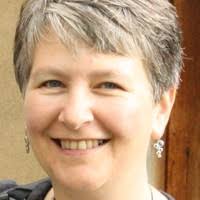The ‘Education Inspection Framework’ (or EIF), setting out Ofsted’s approach to conducting inspections, was introduced in 2019. For early years settings, it was accompanied by the Early Years Inspection Handbook.
A revised version of this Handbook came into effect in September 2022. Although primarily intended as guidance for inspectors, the Handbook offers an incredibly useful resource for early years settings and practitioners. It gives a clear overview of how inspections are prioritised and planned, what to expect from the initial phone call and on inspection day itself, how a setting’s grading is arrived at and what happens following an inspection.
Applying the EIF in different contexts…
A completely new section on “Applying the EIF in different contexts” has been added to the revised Handbook, covering the inspection of childminders, as well as before- and after-school care and holiday provision. According to Ofsted, this section was added in response to feedback, from the childminding sector, that suggested procedures for childminder inspections were not set out clearly enough in the previous version.
Ofsted are keen to stress, however, that this section does not contain anything new or indicate any change of policy. Instead, it aims to set out more clearly, within the existing framework, where inspections of childminders and before- and after-school care and holiday provision may differ from other types of settings, due to the nature of their operation. It must be read in conjunction with Parts 1 and 2 of the Handbook.

Key points for childminders
Here’s a summary of some of the main points childminders should be aware of regarding early years inspections…
Notice of inspection
- Childminders to be given up to 5 days’ notice.
- The specific day will not be given but a time will be provided to allow the childminder to get on with their day if the inspector has not arrived by then.
No children on roll inspections
- To be read in conjunction with paragraphs 24-35.
- Childminders must notify Ofsted of extended periods when they have no children on roll or will be closed) Ofsted have confirmed that this does not apply to short periods of closure such as standard annual leave or minor illness) and when they will reopen.
- Inspectors should try to attend on a day where children are present if a childminder only has children on certain days.
- Childminders can request deferral of the inspection due to having no children on roll or being on leave in line with the Ofsted deferral policy but this is not normally accepted on its own as a reason for deferral.
- Inspectors will assess if the childminder continues to meet the requirements to remain registered on the Early Years Register and, if applicable, the Childcare Register.
- Before/after school only childminders will receive an inspection under Annex A.
During the inspection
The length of inspection is usually about 3 hours. The section on ‘Gathering and recording evidence’ sets out what childminders should expect during an inspection, including how the inspector will gather their evidence, observe the childminder, discuss the childminder’s practice etc. This includes:
- Story of the child: Discussions about how well the childminder knows each child, their needs and interests; what each child knew and could do when they joined the setting; what they know and can do now; what they want them to learn and be able to do next and why; how well they are progressing, and identify any additional help needed.
- A learning walk: A discussion about how the childminder organises their provision, including how and why they have developed their EYFS curriculum. This may be a tour of the setting or a sit-down chat.
- Observations: Of the children at play, during daily routines and engaging with the childminder and any assistants. These do not have to be planned, formal activities. Observations will also consider children’s safety and wellbeing. Our award-winning EY software, Kinderly Together can help you track these and store them digitally or share them with parents.
- Discussions: Observations will be followed up with discussions about children’s learning, progress and behaviour and how the childminder might build on this learning.
- Evaluation: Written self-evaluations are not required for childminders. Inspector will discuss how the childminder assesses the quality of the education and care they and any assistants provide, and how well they meet the children’s needs, and take account the needs and views of parents. Childminders should be prepared to discuss their strengths, weaknesses and plans for improvement. The inspector will consider the effectiveness of a childminder’s and any assistant’s ongoing training and continuing professional development, and the impact of these on children’s well-being, learning and development, and where there are assistants, staff supervision and performance management.
- Paperwork: Part 1 of the Handbook (p49) lists the documentation an inspector is likely to need to see, including 2-year progress checks, DBS and First Aid certificates etc. Childminders are not required to have policies and procedures in writing for the EYFS (though some must be in writing for the Childcare Register), but they must have all statutory procedures in place and be able to explain these to inspectors and parents etc. Any assistants must know, understand and follow the setting’s policies.

Key points for before- and after-school care and holiday provision – including relevant childminders
- Practitioners who provide before- and after-school only provision or holiday provision will receive an Annex A inspection.
- There are no grades for these inspections: a judgement will be only made on the ‘Overall effectiveness: Quality and standards of the early years provision’.
- 3 possible outcomes to an inspection: Met; Not met with actions; and Not met with enforcement.
- Practitioners do not need to meet the learning and development requirements of the EYFS – but they must meet the safeguarding and welfare requirements in full.
- Practitioners must meet the requirements of the Childcare Register where applicable.
Further reading
You can read more about how Ofsted inspections work in practice in my two blogs:
When Ofsted calls – Before the inspection
When Ofsted calls – What to expect on inspection day
For more information, including some useful myth-busters, Ofsted have produced further guidance about what schools, registered early years providers and childminders need to know about delivering the current and revised early years foundation stage (EYFS) and Ofsted inspections under the education inspection framework (EIF).
About the author

With over 20 years’ experience in the early years sector, Rebecca Martland is an early years trainer, consultant, author and 4-times Ofsted ‘outstanding’ registered childminder. Rebecca is a staunch advocate of play based, child-centred education and childcare, with a keen interest in supporting and enthusing others to share this philosophy.
Want more expert, early years advice? Stay on top of your practice by signing up to award-winning software, Kinderly Together! Includes our CPD and webinar platform too and loads of support!



